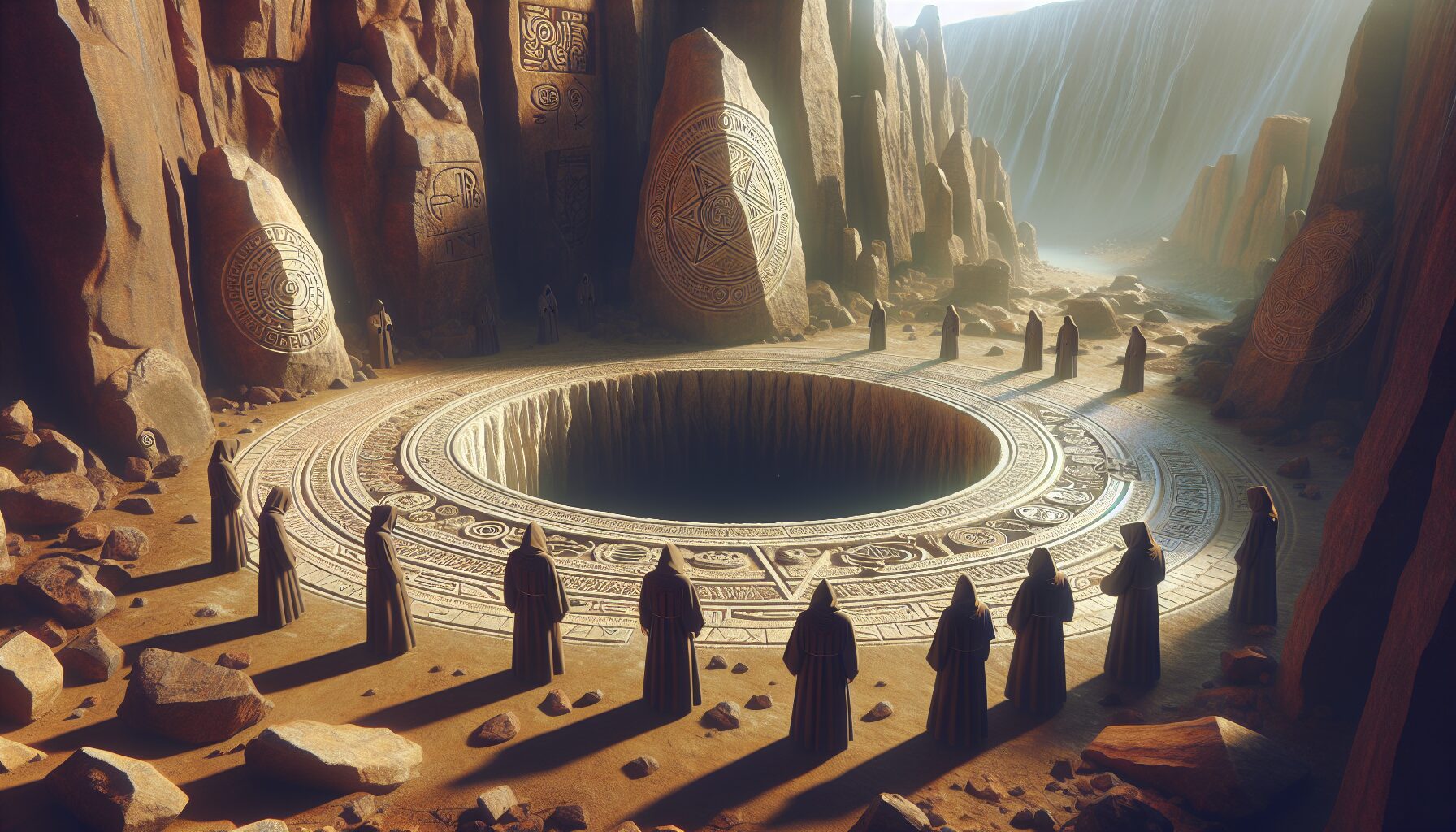The dark, unfathomable expanse of the abyss has long held a magnetic allure for adventurers, mystics, and scholars alike. Throughout history, countless rituals, imbued with both fear and veneration, have been crafted to placate, understand, and even manipulate the unknown forces that dwell beneath the surface. In this exploration, we revisit these rituals, uncovering their roots and examining their relevance in our modern world.
The Timeless Allure of the Abyss
Humanity’s fascination with the abyss is unmatched by any other element of nature. It is, as Joseph Conrad might suggest, an embodiment of the ultimate darkness that confronts our deepest fears and desires. The abyss, both literal and metaphorical, is a canvas of infinite possibilities. As Conrad wrote in Heart of Darkness, “We live, as we dream—alone”. The abyss invites us to contemplate our solitary existence, challenging our understanding of reality and ourselves.
Ancient Rituals: Bridging Worlds
For ancient civilizations, the abyss was a realm of gods and spirits, a borderland where human and divine interactions occurred. From the Greeks to the Mayans, rituals were designed not just as acts of worship but as a means to gain power and protection from the existential threats lurking beyond the known world.
- Greek Nekyia: A rite of necromancy, the nekyia was described by Homer in the Odyssey as a journey to summon the spirits of the dead to foresee the future. The Greeks believed that the dead held the wisdom of the ages and could guide the living through perilous times.
- Egyptian Books of the Dead: Viewed as a guide for the deceased through the afterlife, these texts included illustrations of rituals and spells intended to aid the departed in navigating the chaotic abyssal realms.
- Mayan Underworld Ceremonies: The Xibalba, a feared underworld, played a significant role in Mayan spirituality. Rituals, sacrifices, and games depicted in their myths were believed to appease the gods of the abyss and ensure the cyclical renewal of life.
Modern Interpretations and Significance
In contemporary society, while the literal interpretation of the abyss has faded, the metaphorical understanding persists robustly. The rituals surrounding modern urban myths, psychological theories, and spiritual practices echo ancient inklings about the abyss. Ritualists and practitioners adapt traditional ceremonies for a new era, using technology and contemporary thought to delve into the unknown secrets that bind humanity to the cosmos.
The Psychological Abyss
For many modern thinkers, the abyss represents the subconscious. Influential figures like Carl Jung have equated the exploration of one’s subconscious with a journey into the abyss.
“Whoever fights monsters should see to it that in the process he does not become a monster. And if you gaze long enough into an abyss, the abyss will gaze back into you,”
Jung warned, emphasizing the delicate boundary between understanding and obsession.
Rituals of Rebirth and Renewal
Today’s rituals often focus on personal growth, mindfulness, and transformation, reflecting a deep-seated need to connect with the self and the universe. Ceremonies such as meditation retreats, vision quests, and even immersive art experiences are modern adaptations of ancient rites.
- Mindfulness Meditation: Popular in today’s wellness culture, mindfulness practices echo the ancient search for equilibrium amid chaos, serving as a ritualistic descent into one’s own mental abyss.
- Virtual Reality Journeys: Using cutting-edge technology to simulate otherworldly experiences, these journeys allow participants to explore simulated environments that mirror abyss-like landscapes, granting insight into both the virtual and the divine.
- Artistic Expression: Artists today continually tap into the metaphors of the abyss, using installations or performances to evoke subliminal fears and desires, engaging audiences in shared encounters with the unknown.
The Future of Abyssal Exploration
With the rapid advancements of artificial intelligence and space exploration, humanity stands on the brink of potentially literal and figurative descents into new abysses. What these new ventures hold is yet another layer of mystery.
- Space Exploration: The cosmic abyss beckons humanity with the promise of discovery. How will new extraterrestrial knowledge reshape our rituals and beliefs?
- Artificial Intelligence: This technological frontier represents an abyss filled with transformative potential and existential risk, echoing historical iterations of humanity’s obsession with creation myths.
Rituals of the Abyss have evolved yet remain a testament to humanity’s unwavering drive to confront, understand, and transcend the limitations of our world. Whether through ancient rites or tomorrow’s virtual experiences, the abyss will remain a critical touchstone, ever reminding us of the mysteries that lie both beyond and within.
Embarking on this journey into the depths, ritualists and scholars must constantly balance bold exploration with respect for the enigmas they seek to uncover, embracing the unknown while preserving the timeless wisdom of our ancestors.

Comments